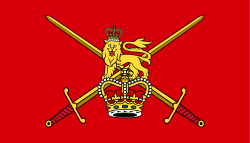 |
| British Army of the British Armed Forces |
|---|
| Components |
| Administration |
| Overseas |
| Personnel |
| Equipment |
| History |
| Location |
| United Kingdom portal |
This timeline covers the main wars, battles and engagements and related issues for the Scottish, English and British Army, from 1537 to the present. [1] [2] [3] [4] [5] [6] See also Timeline of British diplomatic history.